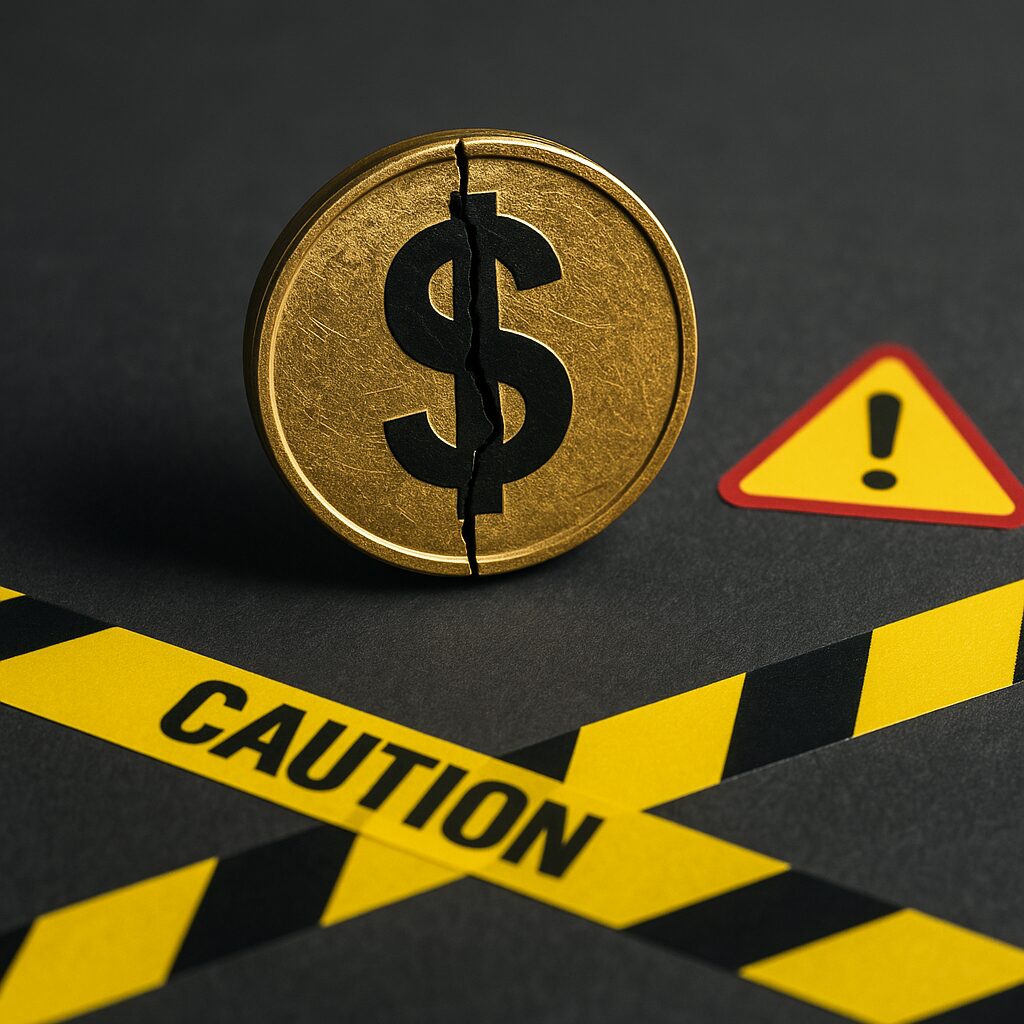The False Sense of Safety
Stablecoins were designed to be the ‘safe haven’ of crypto. Pegged to a fiat currency, typically the US dollar, these assets promised stability in an otherwise volatile market. But as recent history shows, stablecoins can—and do—fail. When they collapse, the damage isn’t just financial; it’s psychological, regulatory, and systemic. In this article, we’ll explore what really happens when a stablecoin fails—from individual investor losses to market-wide shockwaves.
2. When a Stablecoin Collapses: Timeline of a Disaster
Stablecoin failures follow a pattern: early warning signs, a loss of market confidence, a rapid depegging, followed by liquidity evaporation and investor panic.
In the TerraUSD (UST) case, the collapse unfolded over just 72 hours. Billions were wiped out.
On-chain analytics show that large holders exited early, leaving smaller investors to absorb the losses.
This timeline plays out eerily similarly across other failures.
3. Real Stories of Loss: Retail Investors and Funds
Reddit and Twitter are filled with real investor testimonies.
A retiree who put their savings into UST for ‘safe’ yields.
A DeFi user whose wallet dropped from $80,000 to $2,000 overnight.
Even professional crypto funds, who should have known better, were caught off guard.
The pain is often worsened by the illusion of safety that stablecoins project.
4. The Domino Effect on DeFi Platforms
Stablecoins are the backbone of decentralized finance (DeFi).
When one collapses, entire ecosystems follow. Anchor Protocol shut down.
Liquidity pools became unusable. DEX trading pairs vanished overnight.
DeFi platforms using the failed stablecoin as collateral or settlement asset often face insolvency themselves.
One collapse can cascade into a dozen.
5. Legal and Regulatory Aftermath
When stablecoins fail, regulators take notice.
After the UST crash, multiple governments began drafting new laws specifically targeting algorithmic stablecoins.
Issuers are investigated for fraud, misrepresentation, and securities violations.
Lawsuits from retail investors quickly follow, though legal recoveries are rare.
New regulations often emerge from the ashes, tightening control over all stablecoin types.
6. What Happens to the Issuers and Developers?
When a stablecoin fails, scrutiny turns to the people behind it.
In many cases, issuers claim they were blindsided—but blockchain data often reveals that insiders sold tokens or moved funds just before the crash.
Developers may face civil lawsuits, SEC enforcement, and even criminal charges depending on jurisdiction.
Public trust is severely damaged, often permanently, for both the project and its creators.
7. Investor Psychology After a Collapse
The aftermath of a stablecoin failure isn’t just technical—it’s deeply emotional.
Investors often feel betrayed, ashamed, or depressed. Many exit the crypto market entirely.
Some double down on risky strategies to “make back” their losses, a behavior known as revenge investing.
Others become long-term skeptics. These psychological scars create ripple effects that can suppress crypto adoption for years.
8. Case Study: Terra, USDC, and More
TerraUSD (UST) remains the most infamous example of a stablecoin disaster, losing over $60 billion in total market value across its ecosystem.
But it’s not alone. USDC briefly depegged in 2023 due to a banking collapse.
DAI has struggled to maintain its peg during market turbulence.
Even fully backed stablecoins can suffer under extreme market conditions, showing that no design is immune to failure.
9. Can You Recover Lost Funds? Realistic Options
Recovery from a stablecoin collapse is rare. In most cases, the issuing entity either disappears or claims insolvency.
Class action lawsuits may drag on for years with little to no payout.
Some users attempt to trade the crashed token for cents on the dollar, hoping for a partial recovery.
A handful of projects, like USDC, have restored value—but only due to emergency bailouts.
For most, the loss is permanent.
10. Conclusion: How to Prepare for the Next Failure
Stablecoins may look stable, but history proves otherwise.
Investors should diversify across different stablecoins, avoid overexposure, and understand the collateral model behind each token.
Tools like on-chain analytics, risk dashboards, and community signals can help detect early warning signs.
Most importantly, never confuse “stable” with “safe.” Awareness and caution remain your best defense.

